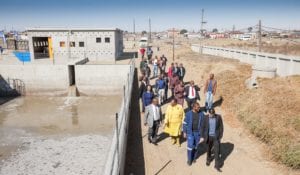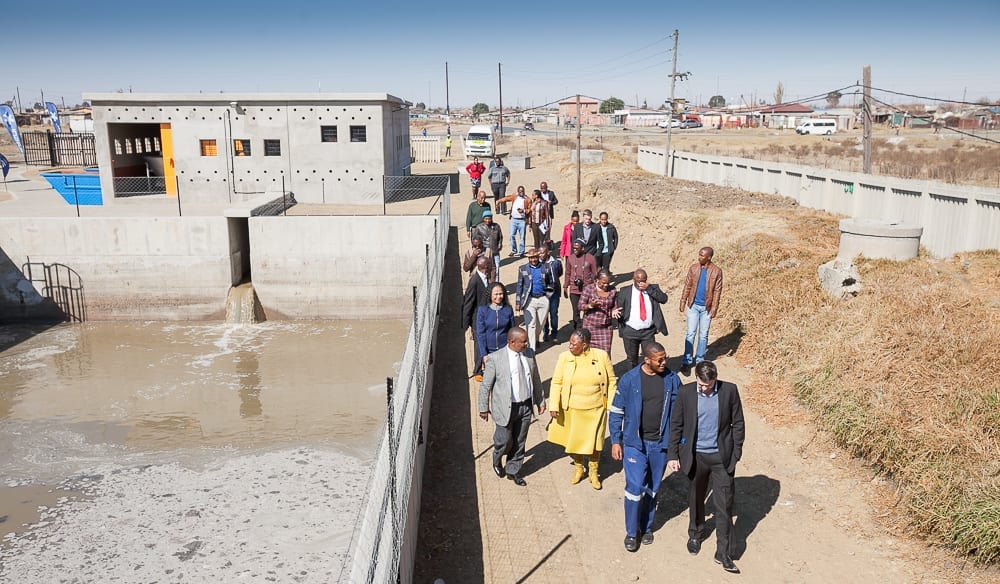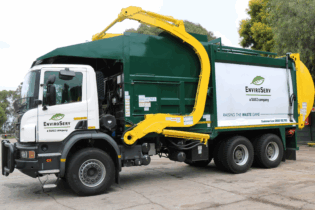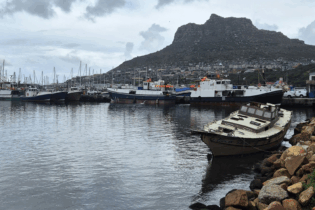and internships. What is Sasol’s current budget for SLP projects, and over what timeframe?
SLPs cover a period of five years and are reviewed every five years. Sasol’s current SLP programme is for the 2015 to 2020 period, with approximately R230 million allocated purely for community development projects. In respect of the Secunda Complex, we operate within four local municipalities and the amount allocated to GMM is approximately R74 million. In addition, we have budgeted approximately R32 million for our community development projects in the Free State.
Are there specific challenges to implementing SLPs? And how does Sasol go about implementing them to achieve the desired outcomes? The biggest challenge is to address the dire need for employment and finding ways to employ community members during project implementation. We also have to ensure that the best local contractor is appointed to implement our community development projects. Unskilled and semi-skilled labour is sourced from the local community. Sasol Mining has an arrangement with the Department of Labour (DoL) regarding recruitment. For each project, we work through the DoL as prospective workers are invited to register on the DoL database. Contractors are required to source from this list in terms of their labour requirements. This approach ensures that the overall labour recruitment process is fair and transparent. To facilitate interaction between the community and the project, we appoint a community liaison officer, from the relevant community, on each project. Sasol Mining appoints black-owned contractors and service providers for its SLP projects, as far as is practically possible. We also assist in contractor development, which includes assistance with registering them on the Sasol database. Our project managers also assist contractors during the implementation of these projects and in the process pass on invaluable experience. Could you provide recent examples of SLP projects implemented for GMM? In addition to the upgrade of the eMzinoni Community Health Centre, at a cost ofR11 million, our R11.5 million investment in constructing and equipping a fire station in Leandra is a good example. We constructed, furnished, equipped and bought vehicles for the Leandra fire station. Previously, the closest fire station was in Secunda/Evander with a response time of around an hour. Leandra and Lebohang are densely populated towns with many informal dwellings. This facility also plays a key role in the event of motor vehicle accidents on the N17, when fires break out in the town and surrounding rural areas, and also assists in combating fires in nearby towns. Some 26 jobs were created for locals during construction. The eMbalenhle Extension 26 sewer project is another good example. The residents of eMbalenhle Extension 26 experienced enormous problems. Some areas were continuously flooded with raw sewage, which posed a significant health risk to the community. Sasol Mining, in cooperation with GMM, replaced and repaired broken or blocked sewer lines in the area at a cost of approximately R8 million. During this project, the contactor appointed was actually based in eMbalenhle. On completion of the project, the sewer system was fully functional and the community was able to use flush toilets for the first time in four years. Sasol Mining also promotes affordable home ownership for low-income employees. In general, a severe housing shortage exists in the Secunda area. To address this, Sasol Mining is constructing affordable housing, in close cooperation with the labour unions, GMM and the Provincial Department of Human Settlements. Could you expand on the objectives of the Sasol Ikusasa initiative? Our SLP objectives meet the requirements of our mining right, while Sasol Ikusasa goes well beyond this and is part of our corporate social investment programme. Where possible, we work together to ensure that our efforts have a lasting, positive impact in our communities. An example of this cooperation is the eMbalenhle sewerage project: Sasol Mining was in alignment with Ikusasa’s initiative, which included the upgrading of the pump station. The project was handed over to GMM on 1 July 2016. Infrastructure has been one of Ikusasa’s focus areas in the last 12 months. Our R13 million investment in electrical substation upgrades is another good example. Secunda’s substation has three transformers installed. If any of these fail, power supply to the town will be affected The Secunda electrical substation reliability project was intended to improve the reliability of power supply by installing a new standby (33 kv/11 kv, 20 MVA) transformer. A further example of Sasol’s commitment to investing in local communities is the handover, in February 2017, of an improved state-of-the art clinic in eMbalenhle Extension 14. Sasol Ikusasa appointed local service providers to undertake this R9 million project, which has made a substantial difference in the lives of the local community.









